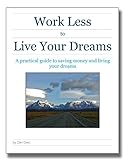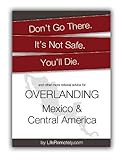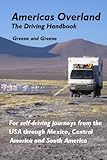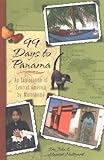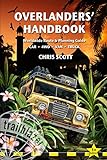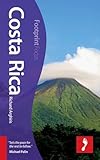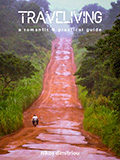Difference between revisions of "Costa Rica"
(→Visiting {{PAGENAME}}) |
(→Buy or sell a car or motorbike in {{PAGENAME}}) |
||
| Line 227: | Line 227: | ||
'''Buy'''<br/> | '''Buy'''<br/> | ||
Unknown.<br/> | Unknown.<br/> | ||
| − | ''Buying a vehicle in Costa Rica generally is easy, but involves a lawyer for the transaction. The lawyer will take around 2% of the value of the vehicle (as determined by the government). There is a yearly "marchama" that is also based on the value of the vehicle and changes yearly as well as RTV inspections. When buying you can pay in both colones and dollars and may get a better price in dollars. WWW.CRAutos.com and local facebook sale groups are great places to search for vehicles. Often, due to taxes, vehicles are expensive to buy both new and used, but fair deals can be found with some searching. '' | + | ''Buying a vehicle in Costa Rica generally is easy, but involves a lawyer for the transaction. The lawyer will take around 2% of the value of the vehicle (as determined by the government). There is a yearly "marchama" that is also based on the value of the vehicle and changes yearly as well as RTV inspections. When buying you can pay in both colones and dollars and may get a better price in dollars. WWW.CRAutos.com and local facebook sale groups are great places to search for vehicles. Often, due to taxes, vehicles are expensive to buy both new and used, but fair deals can be found with some searching. Inspect all vehicles for repairs and fresh paint. I spoke with a man who has imported cars in the past and said some people will import form other countries, but cut the vehicles in half to import them as "parts cars" in order to pay lower tax, then weld them together and sell them. I don't know if this practice is still done or not, but I have seen them cut in half with my own eyes at the import Deposito lot.'' |
''List any difficulties or limitations on where the vehicle can be driven.'' | ''List any difficulties or limitations on where the vehicle can be driven.'' | ||
'''Sell'''<br/> | '''Sell'''<br/> | ||
| − | Import taxes on a foreign vehicle are up to 79% of the assessed value of the vehicle, so it's unlikely anyone would import a vehicle into Costa Rica purely to sell it as a Costa Rican vehicle, though there are importers that do so with vehicles from The United States and they generally sell for a little more as they are considered superior to many here (cruise control, remote locks, power mirrors, etc...) | + | Import taxes on a foreign vehicle are up to 79% of the assessed value of the vehicle, so it's unlikely anyone would import a vehicle into Costa Rica purely to sell it as a Costa Rican vehicle, though there are importers that do so with vehicles from The United States and they generally sell for a little more as they are considered superior to many here (cruise control, remote locks, power mirrors, etc...). |
=References= | =References= | ||
Revision as of 10:02, 10 December 2018
Pan American Highway > Costa Rica
Currency to display:
Contents
- 1 Visiting Costa Rica
- 2 Entering Costa Rica with a Car or Motorbike
- 3 Driving in Costa Rica
- 4 Gas and Diesel price in Costa Rica
- 5 Safety and Security Considerations
- 6 Camping in Costa Rica
- 7 Navigation
- 8 Special Overland Travel interests
- 9 Vehicle Maintenance
- 10 Buy or sell a car or motorbike in Costa Rica
- 11 References
- 12 Helpful External links
Visiting Costa Rica
With easy borders, amazing beaches and wildlife and plenty of ex-pats, Costa Rica is a favorite for all travelers.
Easy border crossings, amazing beaches, flora and fauna make this a popular place for travelers of all types. The roads here are generally in good condition (but keep your eyes open) and with few, cheap toll booths along the major highways. There is a fairly wide variety of foods that change depending where you are located. Restaurants with the name soda in the title will often have good, filling eats for relatively low prices. Casados are a popular and filling option and sodas are found all over the country. Tourist areas have drastically higher prices, so stay just outside of those areas (and San José) to save some money.
Slightly less popular (avoid some crowds) but interesting places to visit include: Tortuguero, Brauilo Carrillo National Park, Volcan Irazú and Turrialba, Nicoya Pennisula, San Isidro de El General y Cerro Chirripó are a few.
Entering Costa Rica with a Car or Motorbike
Correct as of: March 2017
Required Paperwork
(To check if you need a travel Visa for Costa Rica, application instructions and fees see: Costa Rica Visa online application at VisaHQ.com)
- Passport of registered owner (original and 1 copy).
- Drivers license of registered owner (original and 1 copy).
- Vehicle registration (original and 1 copy).
- Vehicle insurance (original and 1 copy). -side note about insurance- I have come in with a motorcycle and friend on another bike and being that they only look at the insurance paper, there is no proof it is actually being paid and is current. Most insurance companies will not cover countries outside of their own (check yours), so why pay for something you cannot use anyway. Just keep the card so you have it for the borders. (see below)
Process at border
- As you drive over the border you will pass through fumigation (free) and be given a receipt.
- The owner of the vehicle gains entry at immigration (migración), including a stamp in their Passport. A copy of this new stamp is required.
- Insurance for the vehicle must be purchased. (see below)
- The owner must show the new Passport stamp (including a copy), Drivers license, the original Vehicle registration, vehicle insurance and the fumigation reciept to customs (aduana).
- The owner is issued a temporary import permit for the vehicle.
- Detailed instructions from Oct 2014, including GPS POI's, Map of office locations and pictures can be seen here: Costa Rica Penas Blancas - La Cruz Border crossing
NOTE: You may encounter locals offering to help you with paperwork to get across the border. See Border Crossing Helpers for advice.
UPDATE 5th July 2016 - Crossing from Nicaragua, San Pancho to Costa Rica, Tablillas with a motorcycle. I've published a full account including process, costs, photos and GPS coordinates of our experience in crossing this border on 5th July 2016. Full details can be found at http://www.tiger800rtw.com/?p=1407
I have visited the Los Chiles crossing a few times and find it to be very simple and only a handful of people trying to get through. I have been twice and there were less than ten people crossing both times. Very relaxed border crossing. To cross in or out of both Nicaragua and Costa Rica to the other side it took about 2.5 hours in total for two motorcycles.
Cost of entry
Free.
Exit fee from Costa Rica to Panama: 8 USD pp paid in cash.
Permitted length of stay
90 days.
Not possible to extend the stay of the vehicle, and also be aware that you wont be allowed back in the country with the vehicle until the vehicle has been outside the country for 90 days, so going out for a day, or even 60 days, is out of the question. Confirmation of this limit. No Prorroga is offered by Costa Rica and Nicaragua only gives 30 day vehicle permits.
Under VERY special circumstances (i.e. vehicle is being repaired) you can extend it past 90 days. This was done in late 2018:
We have mechanical issues and our current TIP expires in a week and we were doubtful we could be back on the road in that time. We got a letter signed by our mechanic. This outlined our problem and solutions which included having to road test the vehicle. He stated that it would take 30 days. This letter was then endorsed by a lawyer. We had previously left Costa Rica and had obtained a new 90 day stamp on our passports when we flew back in. This is important as it means your driving licence is also valid for the 90 days. There is an International agreement on the length a foreign driving licence is valid in each country. To get our vehicle out of bonded storage we also required addition insurance which ran consecutively to the existing. With all this we went to the Audana today. Initially the officer said it was not possible and could only suspend our TIP. Eventually she spoke with colleagues and yes if a vehicle is under repair the TIP can be extended providing you have the correct letter, driving licence and insurance cover.
Storing a vehicle and temporarily leaving the country
You can leave your vehicle in a bonded storage in Costa Rica to freeze the temporary importation papers, you can do it for as long as you want. Prices range from $3.00 USD to $8.00 USD per day depending on facilities and if it is indoor parking or outdoor. By mindfull that during rainy season you might want to leave it indoors, during the dry season a tarp is recomended to keep some of the sun out. Once you drive the vehicle into a bonded storage facility they freeze the permit for you, once you want to pick it up you have to go to customs first (there is an office by the airport but it is not inside the airport), get the permit reactivated (you will need proof of identity and to have a valid insurance) once the permit is active again you can go and pick up the vehicle.
Caution: after suspending your permit the number of days you have left on your permit will start ticking down as soon as the passport who's name the vehicle is in re-enters Costa Rica. So if you have suspended your permit and then just pass through Costa Rica without getting your vehicle out (like we did) then your permit might be expired by the time you get back to it. This required 2 days of legwork to get out of.
There is an excellent writeup, along with Spanish translations for some important terminology on this site: http://headsouth.travellerspoint.com/19/ Followup article about steps to pick up are here: http://headsouth.travellerspoint.com/24/
Another good writeup, with GPS coordinates to specific places to park and optain the correct paperwork: http://30forthirty.org/2013/04/07/long-term-costa-rica-parking/
And another: http://heatherandscottsadventures.blogspot.com/p/store-vehicle-and-suspend-permit-in.html
And another (from mid 2018) http://www.monkeysontheroad.com/how-to-keep-your-vehicle-in-costa-rica-longer-than-90-days/
Exiting with a vehicle
- The registered owner is stamped out of Costa Rica at immigration.
- The registered owner presents the temporary import paper to customs, where it is cancelled.
- VERY IMPORTANT, If you are planing to get back into Costa Rica make a photocopy of the temporary importation paper and get it stamped by the official, if you dont do that they will hassle you when reentering.
- Costa Rica has a $7.00 USD exit fee for people. Some people have been forced to pay on credit card which has then been charged multiple times. Say you don't have a credit card and pay with cash. There are Impuestos de Salida tiendas nearby that accept cash. The credit card machine at the immigration office is for convenience. But the stamp will only be applied to your passport once the official sees the receipt for the exit tax.
Driving in Costa Rica
Recommended books for Overlanding in Costa Rica
Travel insurance for Costa Rica
World Nomads offer the most flexible Travel Insurance at the best prices for multi-country / multi-year trips. You can buy, extend and claim online, even after you've left home.
Vehicle insurance requirements
Insurance is mandatory in Costa Rica and you will be forced to buy it at the border before you are allowed to enter. There are always agents at the border to buy from.
Cost of insurance
$35.00 USD for 3 months for a 4x4. €38.00 EUR for 3 months for a TOYOTA camper van.
Where to purchase insurance
Right at the border. The customs guys will tell you exactly where to go.
Driving license
Technically an International Driving Permit is required.
In reality, showing a license from anywhere in the world seems to be good enough.
Driving side of road
Right.
Right hand drive vehicles are not permitted.
A couple got refused at the Costa Rican border coming from Nicaragua in January 2016. They got told that RHD are no longer allowed in Costa Rica and that there is no such permission as in El Salvador.
What the couple did, they slept at the border and tried it the next day in the morning again and then they could enter, only because the officer didn`t notice that it`s a RHD.
We crossed the Costa Rican borders 6 times in a RHD between August 2015 and February 2016. Five times out of six we had no issues whatsoever. Our last crossing turned into a major hassle. When we asked the officials how come we were able to cross the country 5 times and no one mentioned anything about RHD, all they could say that the system was malfunctioning.
Mandatory items in vehicle
You must wear a reflective vest at all times for motorcycles.
Roads
General Road quality
Roads in Costa Rica are generally of good quality, but do watch out for pot holes and broken sections. Smaller towns generally have poor road construction, but main roads are paved, though sometimes poorly. Lesser roads are gravel and vary greatly from very good, to extremely rutted and dusty to mud pits. Any gravel road on either coast will be horrendous in the rainy season.
The roads from San José to San Isidro de General and San José to Limón can be very very dangerous at night or when it is raining. The roads are in good condition, but expect aggressive drivers who do not always obey traffic laws. The 32 has sections with no road markings.
Road signs
Road signs are mostly common and clear.
Toll Roads
Hwy 27 is a toll road, goes from San Jose City to Caldera, Puntarenas. Ruta 32 from San José to Limón is also a toll road. Expect to pay less than 500 colones for Motorcycles and cars at tolls.
Free option is Hwy 1 but it takes twice as much time and probably will spend the booth money on gas.
Bribery in Costa Rica
Police bribery is not common in Costa Rica, but it certainly does happen. Be careful, if you bribe the wrong one you risk jail!
See the bribery tips page for advice.
Checkpoints
Police checkpoints are not common in Costa Rica, though you may encounter them. You'll be asked to show your Passport, Vehicle registration, drivers license, vehicle insurance and the temporary import permit you were issued at the border. For the most part, Police will not bother foreigners too much.
Traveling with pets
According to travelers in 2012, you need: [1]
Travelers in 2013 wrote this when traveling from Nicaragua to Costa Rica: [2]
- A Health Certificate for the animal in Spanish (updated at least every four months)
- A vaccination record (the European Pet Passport works well)
You might not be asked for either one, but you should have them ready.
Gas and Diesel price in Costa Rica
Last updated: June 2012 (Diesel March 2017)
Currency and unit to display:
| Gasoline Grade | Price |
|---|---|
| Regular | ?? |
| Super (90) | ?? |
| Premium (95) | $4.60 USD per Gallon (US) |
| Ultra (97) | ?? |
| Normal Diesel | €0.82 EUR per Liter |
| Diesel (low sulfur) | ?? |
Gas and Diesel Availability / Frequency
Gasoline shortages in Costa Rica are not a problem.
Typically gas stations are not more than 100 - 200km apart.
Gas and Diesel Quality
Accepted to be good quality.
Sulfur content is low.
Safety and Security Considerations
Driving at night
Driving at night is not considered a huge problem in Costa Rica, though it's not recommended due to safety concerns and road hazards that can not be seen in the dark.
Vehicle parking
Parking vehicles on the street in smaller towns during the day is typically OK. Find a secure parking lot in big cities and at night. Do not leave personal belongings in the car to avoid theft. Secure parking will be around $20.00 USD per night.
Special driving considerations
None.
Security advisories and information
- Country Specific Information - U.S. Department of State
- Travel Reports and Warnings - Foreign Affairs and International Trade Canada
- Travel advice by country - Foreign and Commonwealth office (U.K.)
- Travel Advice for Costa Rica - Australian Department of Foreign Affairs and Trade
Camping in Costa Rica
Camping is popular in Costa Rica, both with backpackers and locals. Virtually all beachside towns have multiple sites to choose from for around $3.00 USD to $5.00 USD per person, per night.
Being far away from major roads is preferable for wild camping.
Camping guide books
No specific book exists, though the usual backpacker guide books mention a campground in virtually every town and city.
Drinking water
Tap water in most of Costa Rica is safe to drink. Every corner store sells 1 and 2 liter bottles, and 20 liter bottles can be bought at most large grocery stores if you don't feel safe drinking tap water. In very remote towns or small islands it is recommended to ask the locals if tap water is safe to drink.
Paper maps
Reise Know-How are amoung the best paper maps. Purchase paper maps before arriving in Costa Rica
GPS Maps of Costa Rica
- Open Street Map: Appears to have good coverage.[3]
- Garmin: Apparently no map of Costa Rica.
- TomTom: No map of Costa Rica. [4]
- Cenrut: Free Open Source GPS map of Central America. Coverage is occasionally better than OSM. [5]
GPS co-ordinates for camping, propane, gas, repairs, etc. in Costa Rica
- iOverlander is a website and iPhone application designed by Overlanders, for Overlanders. It contains GPS co-ordinates and reviews for camping, hotels, propane, water, mechanics, borders and much more.
- Places in Costa Rica - Camping Places & Sights in Costa Rica by Pawsontour
- Camping Sites: CostaRica - Detailed list of campsites and propane filling with description, directions and GPS co-ordinates. Some at hotels (lists facilities and price), some roadside and free.
- Central America Camping Locations - List of campsites, with basic directions and GPS co-ordinates. Mostly free sites.
- Camping Log 1: Central America - List of campsites, shopping, fuel, propane and border crossings with excellent descriptions and GPS co-ordinates.
- White Acorn camping log page - GPS co-ordinates and excellent description of campsites]
- Costa Rica Campgrounds and Hotels - Life Remotely - List of campgrounds and hostels with photos, GPS co-ordinates, descriptions and amenities from 2012]
Special Overland Travel interests
None.
Vehicle Maintenance
Dealers
4x4s / Trucks
- Toyota Global Dealer Locator
- Land Rover International Dealer Locator
- Mercedes Benz International (select country on bottom right)
- Jeep International site locator
Motorbikes
Local Garages
- Geo4WD - Top notch guys, very knowledgeable
- Southern Nicoya Penninsula: Ronald Monge Taller in Cobano. Land Cruiser specialist but works on all 4x4 makes. (limited english but Ronald's son is fluent)
- Southern Pacific: Tuff Trux in Uvita. Jeff is US expat. Works on all makes 4x4
- Central Valley: 4WD Expedition Shop in Santa Barbara-Heredia. Johnny Ulate is Land Cruiser and Suzuki specialist. (very limited english) http://4wdcostarica.com
Buy or sell a car or motorbike in Costa Rica
Buy
Unknown.
Buying a vehicle in Costa Rica generally is easy, but involves a lawyer for the transaction. The lawyer will take around 2% of the value of the vehicle (as determined by the government). There is a yearly "marchama" that is also based on the value of the vehicle and changes yearly as well as RTV inspections. When buying you can pay in both colones and dollars and may get a better price in dollars. WWW.CRAutos.com and local facebook sale groups are great places to search for vehicles. Often, due to taxes, vehicles are expensive to buy both new and used, but fair deals can be found with some searching. Inspect all vehicles for repairs and fresh paint. I spoke with a man who has imported cars in the past and said some people will import form other countries, but cut the vehicles in half to import them as "parts cars" in order to pay lower tax, then weld them together and sell them. I don't know if this practice is still done or not, but I have seen them cut in half with my own eyes at the import Deposito lot.
List any difficulties or limitations on where the vehicle can be driven.
Sell
Import taxes on a foreign vehicle are up to 79% of the assessed value of the vehicle, so it's unlikely anyone would import a vehicle into Costa Rica purely to sell it as a Costa Rican vehicle, though there are importers that do so with vehicles from The United States and they generally sell for a little more as they are considered superior to many here (cruise control, remote locks, power mirrors, etc...).
References
- ↑ Central American Borders and dogs
- ↑ Traveling with dogs from Canada to Argentina. Experiences and Infos.
- ↑ OpenStreetMap Costa Rica
- ↑ TomTom Map availability
- ↑ Cenrut Mapping Project
Helpful External links
- Costa Rica: Visa and Passport requirements | World Travel Guide
- Health Information for Travelers to Costa Rica - Center for Disease Control and Prevention
- Costa Rica travel guides at wikivoyage
- Costa Rica - Wikipedia, the free encyclopedia

